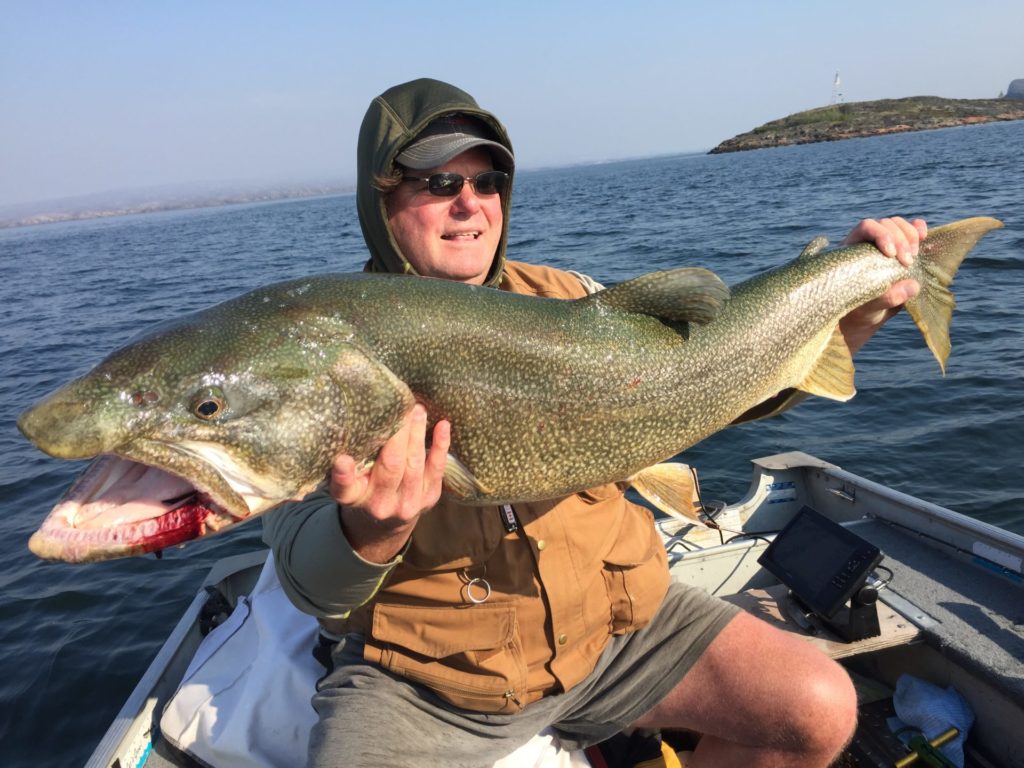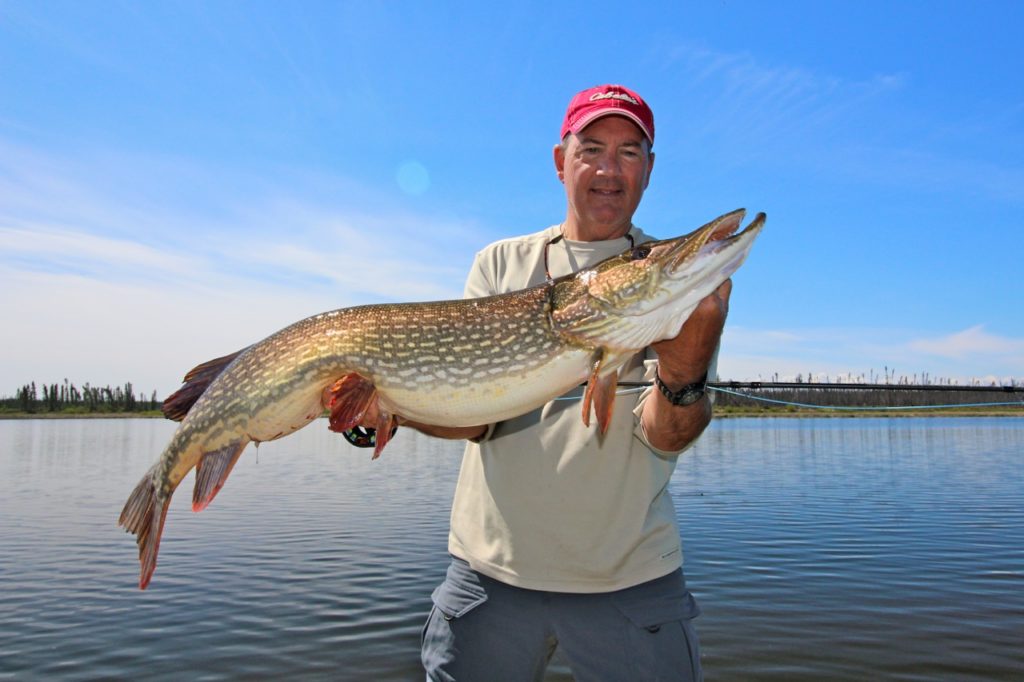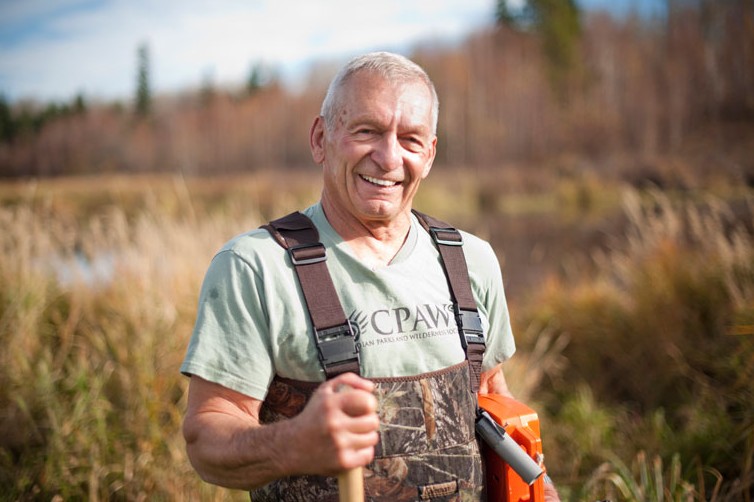The boiling point
To prevent the complete loss of Canada's precious fisheries, we must act now
Advertisement
Although some of Canada’s favourite sportfish may not be around for your grandchildren to enjoy, many of you will scoff at the culprit: global climate change or, more specifically, the warming of the planet. But make no mistake, our warming climate is threatening fisheries and other aquatic life in numerous ways. The plight of lake trout offers a prime example. By the middle to the end of this century, it’s predicted lake temperatures throughout Canada will have warmed by five to six degrees Celsius. That means numerous lake trout populations will be toast.
How so? Currently, many of the country’s best laker fisheries are large, windswept bodies of water such as Lac la Ronge, Wollaston Lake and Lake Athabasca. These lakes reach a water temperature of 18 to 19°C in midsummer, but are too shallow to have much of a thermocline. The lethal temperature for lake trout is only 23.5°C, and this will be exceeded in many of these lakes.
Advertisement
Since I started making measurements in the late 1960s, I’ve observed the water temperatures of small boreal lakes rise by two degrees. This has led to deeper thermoclines and higher oxygen consumption, and consequently shrinking lake trout habitat. Lake whitefish, ciscoe and opossum shrimp are all species that have co-evolved with lake trout and are important forage in lake trout diets. They’re also sensitive to warm temperatures and low oxygen.
On nutrient-loaded lakes such as Lake Winnipeg, it’s not uncommon to see shorelines littered with dead whitefish and ciscoes, either in late summer or just after ice-out. These fish kills are usually the result of suffocation, as oxygen is used up by the decomposition of excess algal blooms. As waters get warmer, we can expect such kills to happen more frequently.

In some cases, warm-water species will move in to replace dwindling cold-water stocks. In some of the small lakes that I’ve studied, for example, dwindling lake trout stocks have been accompanied by increases in northern pike. But in many waters, replacement warm-water species are simply not present.
Advertisement
Lakers and their forage aren’t the only fish species in trouble—most trout and char are very sensitive to high temperatures and low oxygen. Already, we’re seeing trout kills in the famous Bow River and other streams in southern Alberta, the result of high water temperatures or low oxygen levels (oxygen is less soluble in warmer water). Several times during the past decade, Alberta Sustainable Resource Development has issued advisories asking anglers not to fish the province’s southern streams during periods of extremely warm temperatures or low flows.
Lake trout and their forage aren’t the only fish species in trouble—most trout and char are very sensitive to high temperatures and low oxygen
In streams, we can probably expect a slow disappearance of the most temperature-intolerant species, such as Arctic grayling and bull, brook and cutthroat trout. Initially, there will probably be a slight increase in more temperature-tolerant species, such as brown and rainbow trout, although they can only handle a few degrees more.
Of special concern is the fate of salmon stocks in a warming world. At present, the southern limits of some species, such as sockeye, are very close to the border between Washington and B.C., with waters to the south of that line being too warm. In some of the warmer years of the last decade, sockeye in the oceans seem to be being replaced by mackerel, a warm-water species moving north—and preying on young salmon.
We’ve also seen years when the water temperature in the lower Fraser River was too warm for salmon entering to complete their weeks-long upstream spawning runs. Even in Alaska, some streams are warming to such a degree that the survival rates of salmon eggs and embryos are threatened. And it will only get worse: by 2080, Alaska is predicted to be seven to eight degrees Celsius warmer than it is now. Similar predictions have been made for arctic and subarctic Canada, with central and western boreal areas only a couple of degrees behind.
So, that’s the bad news. The good news is, we may still be able to stop the complete loss of our precious fisheries—if we can all agree on what needs to be done. Step one? Stop debating whether man-made, or anthropogenic, global warming is the cause.

During my 50 years as an environmental scientist, I’ve met most of the big names in atmospheric sciences, paleoclimatology, geochemistry and oceanography who have contributed to today’s near-consensus on climate warming. I can assure you, the consensus is no conspiracy. I have been to several sessions on climate-related topics at the annual American Geophysical Union meeting, where competing groups present their most recent results and conclusions. The experience is like watching 100 wildcats thrown into a big burlap bag. The exchanges and arguments are heated and sometimes ruthless. Conclusions that are not well backed by data are met with withering criticism, and sometimes outright ridicule. Scientific consensus is reached begrudgingly, in incremental steps, and only after several studies by different groups have verified the methods and conclusions.
SCIENCE IS INCAPABLE OF CONSPIRACY
Science is by design anything but conspiratorial. All renowned scientists earned their fame by persuading their peers that the boundaries of scientific knowledge are wrong, and demonstrating that they must be corrected. Scientific reputations are made by doing unique studies, not by being a part of the mainstream gang. Innovation and competition, rather than conspiracy, is the name of the game. There’s little sympathy for whiners who complain they can’t get research funding, or have trouble getting their papers published. Every researcher has to climb the same greased pole that is science.
A common complaint of global-warming skeptics is that scientific journals discriminate against their papers. As a long-time editorial board member for publications such as Science and the Proceedings of the National Academy of Sciences, I’ve kept an eye out for evidence of such discrimination. I frankly would love nothing better than to send a well-argued paper by a skeptic out for review, just to make reviewers squirm. However, I’ve never had the chance—not a single manuscript has ever been submitted by a climate skeptic.
We may still be able to stop the complete loss of our precious fisheries—if we can all agree on what needs to be done
At the same time, I’ve handled several papers by advocates of the human-caused climate-warming theory. Some were published, while others were trashed by peer reviewers who pointed out flaws in the reasoning or considered them not good enough for prestigious journals. This is how all sciences operate. I’ve concluded that climate skeptics are too busy writing for blogs to bother with mainstream science. If any of them had a scientifically convincing argument that greenhouse gases are not causing climate warming, you can be sure it would be published swiftly, followed closely by a Nobel Prize.
Other studies confirm my observations. In 2004, science historian Naomi Oreskes did a search of the Institute for Scientific Investigation index using the keywords “climate change.” She compiled the abstracts of all 928 of the listed papers for the period 1993 to 2003—75 per cent explicitly or implicitly supported the idea that human emissions of greenhouse gases caused climate warming. The remaining 25 per cent were on paleoclimate, ignoring recent climate altogether. Remarkably, not a single paper was skeptical of the consensus that human emissions of greenhouse gases are the most important reason for recent climate warming.
Of course, numerous skeptics immediately derided the study on their blogs, but over time they’ve been forced to eat serious helpings of crow. Last year, Oreskes co-authored Merchants of Doubt with fellow historian Erik Conway, taking a much more detailed look at the methods used by deniers of climate warming to obfuscate policy decisions. They point out parallels to the tactics used in other recent “scientific” denials, such as the efforts to diminish the dangers of tobacco, the stratospheric ozone hole and acid rain.
Scientific consensus is no conspiracy—conclusions not backed by strong data are met with withering criticism, and even ridiculed
Often, the same individuals have been involved in more than one denial campaign. In its report Smoke, Mirrors and Hot Air, the U.S.-based Union of Concerned Scientists explores the links between ExxonMobil’s efforts to create uncertainty around climate science and Big Tobacco’s tactics to question the dangers of smoking.
Meanwhile, the hacked e-mails that formed the basis for the so-called Climategate affair over a year ago have since been closely examined by several independent scientific bodies, and the alleged conspirators have been cleared of all charges. Today, every National Academy or Royal Society in the First World supports the call to control human greenhouse gas emissions.
Many of the arguments from climate skeptics are simplistic and dead wrong, or skewed by cleverly leaving out key pieces of science. For example, skeptics are fond of pointing out that water vapour is the most important of greenhouse gases, much more important than CO2. All natural scientists agree with this. If it were not for water vapour, the earth would be more than 30 degrees cooler than it is now, making it uninhabitable for most life forms.
Unlike CO2, however, water vapour has a short lifetime in the atmosphere. It quickly builds up, then falls as rain, snow, fog and other forms of precipitation, usually within several hundred kilometres of where the air mass picked it up. Rather, it’s the small increase in temperature posed by increasing CO2 that is the major concern. Once in the atmosphere, CO2 persists for several years to several decades. Most of the other greenhouse gases emitted by man also reside in the atmosphere for a long time.
If we take steps to reduce our emissions, we can avoid the worst consequences, but it’s clear we’ll still have to adapt
Another myth perpetuated by skeptics is that climate predictions are based on huge, unrealistic climate models. The truth is, contemporary climate knowledge is grounded in a wide variety of fields in order to determine the most precise scenario possible. Paleoclimatology contributes knowledge of past climate conditions, for example, while oceanography contributes knowledge of ocean circulation patterns, stratification and other factors. Then there’s geochemistry and biogeochemistry, which examine the processes controlling CO2 and other greenhouse gases. Meanwhile, contemporary ecologists study how warming affects animals and plants, hydrologists examine river flows and lake levels and glaciologists research melting of ice fields and glaciers. Modellers then try to put all the findings into scenarios that predict the general course climate change is likely to take.
Yet another popular skeptic’s argument is that it has been warmer in the distant past than it is at present. This is widely acknowledged to be true, but during those epochs when it was warm, it was a very different world—pampered urban humans and their immobile cities full of expensive infrastructure did not exist until a few hundred years ago. To respond to prehistoric warming events, the animal life at the time simply moved above sea level or to cooler locations, usually over centuries or longer. Those species that could not move or adapt died.
The same thing will happen during this period of climate change, albeit at a much faster rate. Sure, if we take steps to reduce our emissions, we can avoid the worst consequences, but it’s clear we’ll still have to adapt. Simply, we have not acted soon enough. This will require the very expensive and very complicated rebuilding of cities, the relocation of agriculture and shifts in species.
While there’s general agreement that today’s climate will continue to warm as the result of greenhouse gas emissions, much remains to determine exactly how much it will warm, and where and what the impacts will be on humans and ecosystems. There’s also still much debate over what sort of changes a warmer climate will cause in rainfall, snowfall and evaporation patterns, as well as the frequency and intensity of droughts, floods and storms.
The arguments from climate skeptics are simplistic and dead wrong, or skewed by leaving out key pieces of science.
Topping it all off, there’s increasing evidence the predicted warming may be amplified as it triggers more carbon-belching forest fires, melts permafrost (which contains large amounts of carbon) and releases frozen methane from the bottom of northern oceans. Because of this, some scientists fear runaway global warming outstripping the most extreme of current predictions. As the Lamont-Doherty Earth Observatory’s W.S. Broecker, frustrated by the procrastination of policy-makers, once famously exclaimed, “Climate is like a wild beast, and we’re poking at it with sticks!”
What if the scientists are wrong? Science by its very nature is based on probabilities, so it can never be 100 per cent certain. As a character asks in a recent political cartoon by Pulitzer Prize winner Joel Pett, “What if it’s a big hoax and we create a better world for nothing?” Well, the negative consequences of the scientists being wrong would be few. The worse-case scenario: helping to engender a conservation ethic.
Some years ago, for example, I began using my VW diesel Golf, canoe strapped on top, for fishing trips, leaving my big honkin’ pickup and powerboat in the yard to reduce my carbon footprint. I quickly discovered I saved enough gas money per trip to buy a lot more fishing gear. In the same way, more insulation, better windows and compact fluorescent lights save money—in addition to reducing carbon emissions.
Cutting our emissions now will also leave more fossil fuel reserves for future generations. Most of the wonderful plastics and organic chemicals we rely on can be traced to the same petroleum feedstocks we use to fuel our vehicles. It seems downright silly to be rapidly blowing these irreplaceable resources out our tailpipes. And less reliance on unstable oil-producing nations can only make Canada a more secure place to live.
Now, what if the skeptics are wrong? Should the climate continue to warm as predicted, the consequences will be enormously expensive and potentially catastrophic, especially in a world with a rapidly expanding population increasingly reliant on carbon-spewing industry. The potential for that alone should be enough for us to demonstrate we have more intelligence than fruit flies.
And to become far more moderate in our demands on the planet.
About David Schindler
In 1968, David Schindler founded the Experimental Lakes Area, a major Department of Fisheries and Oceans research complex near Kenora, Ontario. He served as director until 1989, studying the effects of eutrophication, acid rain, radioactive elements and climate change on boreal ecosystems. His findings have been widely used in devising ecologically sound management policies in Canada, the U.S. and Europe.
A Rhodes Scholar and the author of more than 300 scientific publications, Schindler is now the Killam Memorial Chair and professor of ecology in the University of Alberta’s department of biological sciences. His current research includes the restoration of mountain lakes stocked with alien fish species, the restoration of eutrophic lakes and the effects of climate change and UV radiation on lakes.
Schindler, 70, has received numerous honorary doctorates and awards for his work, including the Gerhard Herzberg Gold Medal for Science and Engineering—Canada’s highest scientific honour. Most recently, he was awarded the 2010 LaRoe Prize from the International Society of Conservation Biology, and in May he will receive the Canadian Society for Ecology and Evolution’s President’s Award.
An officer in the Order of Canada and a founding member of the International Water Academy, Schindler currently chairs the Safe Drinking Water Foundation, a non-profit group helping First Nations communities address water problems. As well, he chairs the International Review Committee for the Alberta Water Research Institute.


